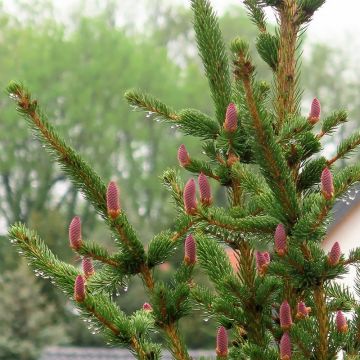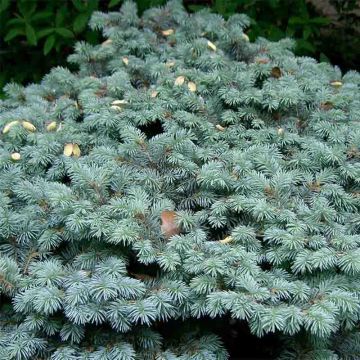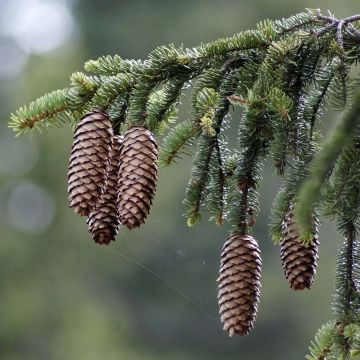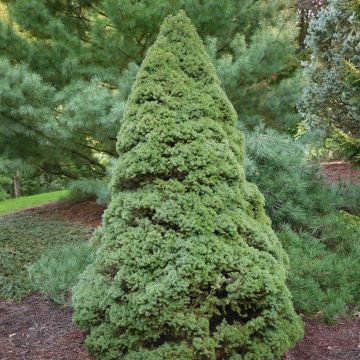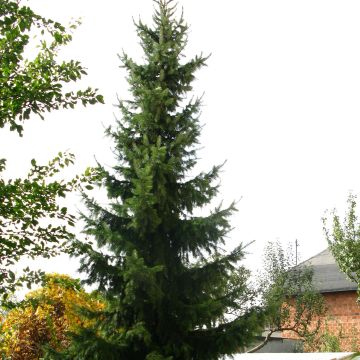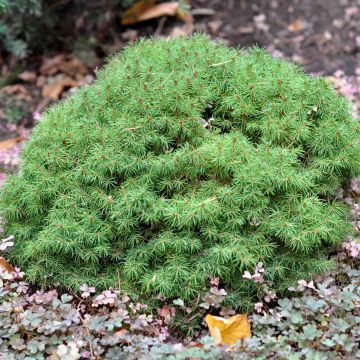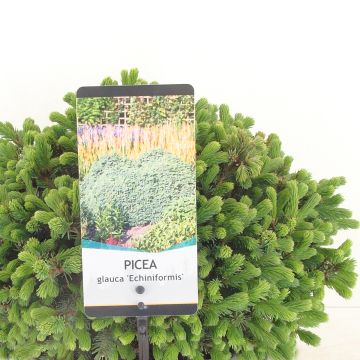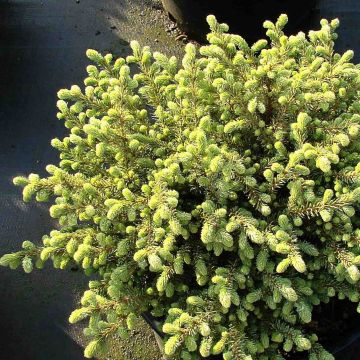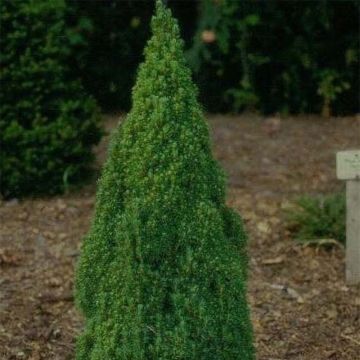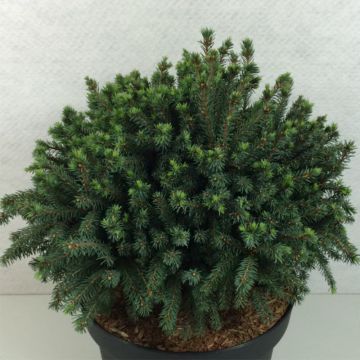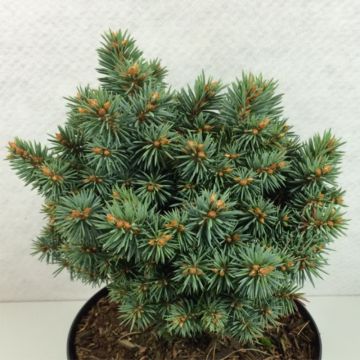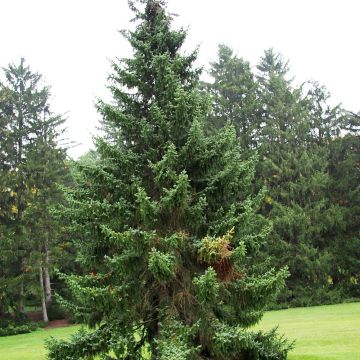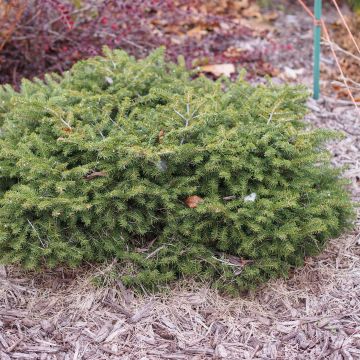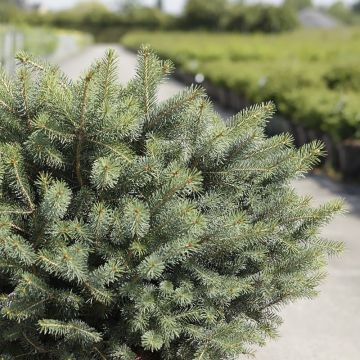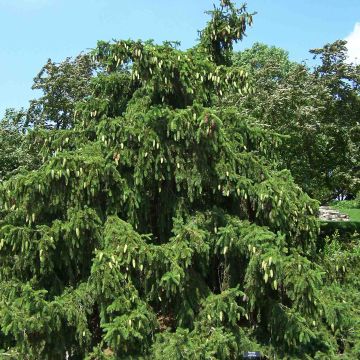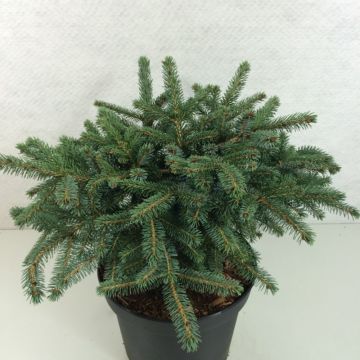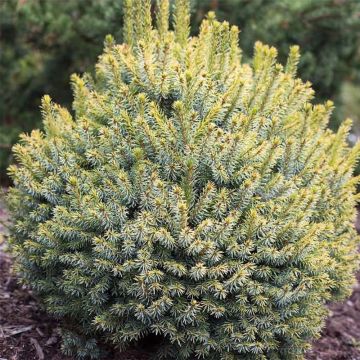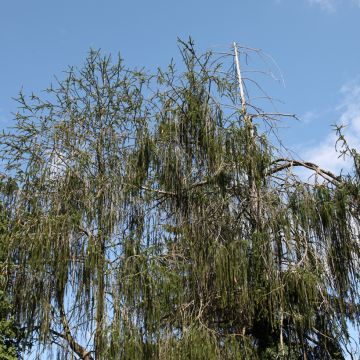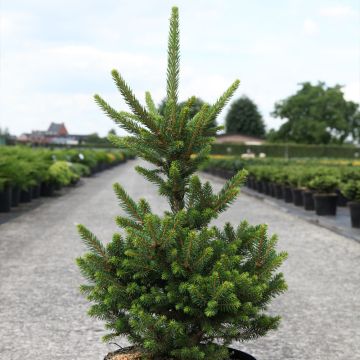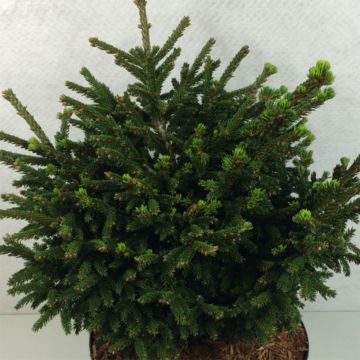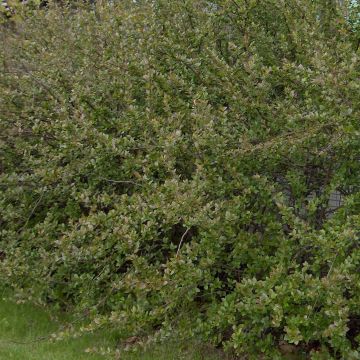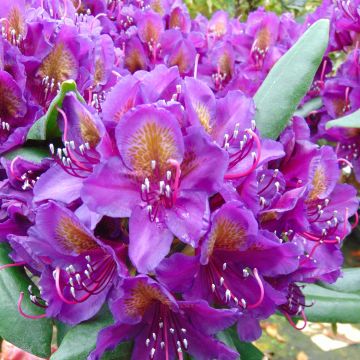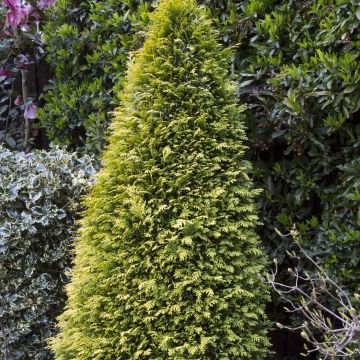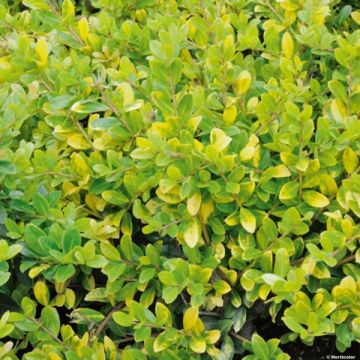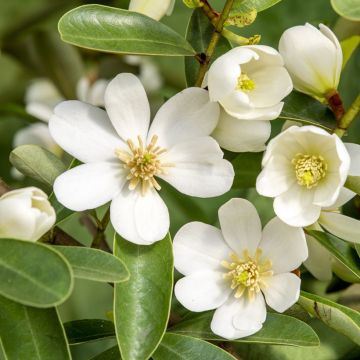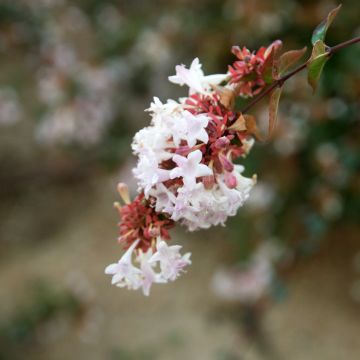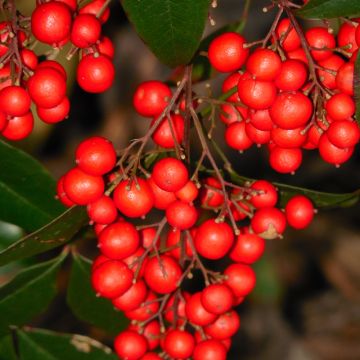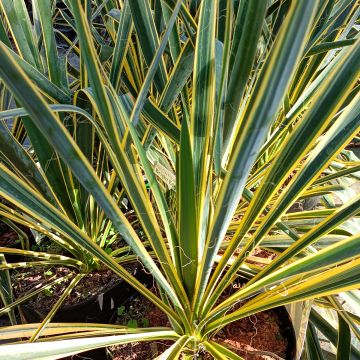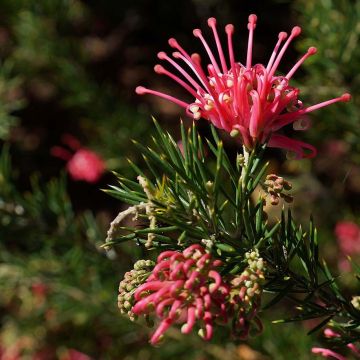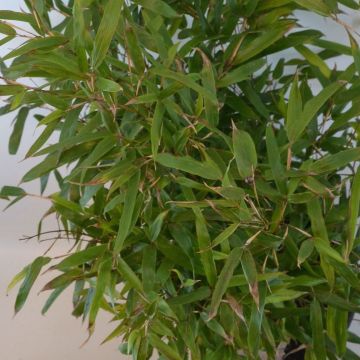Shipping country and language
Your country of residence may be:
Your country of residence is:
For a better user experience on our website, you can select:
Your shipping country:
-
Andorra
-
Austria
-
Belgium
-
Bulgaria
-
Canada
-
Chile
-
Croatia
-
Cyprus
-
Czechia
-
Denmark
-
Estonia
-
Finland
-
France
-
Germany
-
Greece
-
Hungary
-
Iceland
-
Ireland
-
Italy
-
Latvia
-
Lithuania
-
Luxembourg
-
Malta
-
Monaco
-
Netherlands
-
Poland
-
Portugal
-
Romania
-
Slovakia
-
Slovenia
-
Spain
-
Sweden
-
Switzerland
-
United Kingdom
We only deliver seed and bulb products to your country. If you add other products to your basket, they cannot be shipped.
Language:
-
French
-
German
-
Spanish
-
English
-
Italian
My Account
Hello
My wish lists
Log in / Register
Existing customer?
New customer?
Create an account to track your orders, access our customer service and, if you wish, make the most of our upcoming offers.
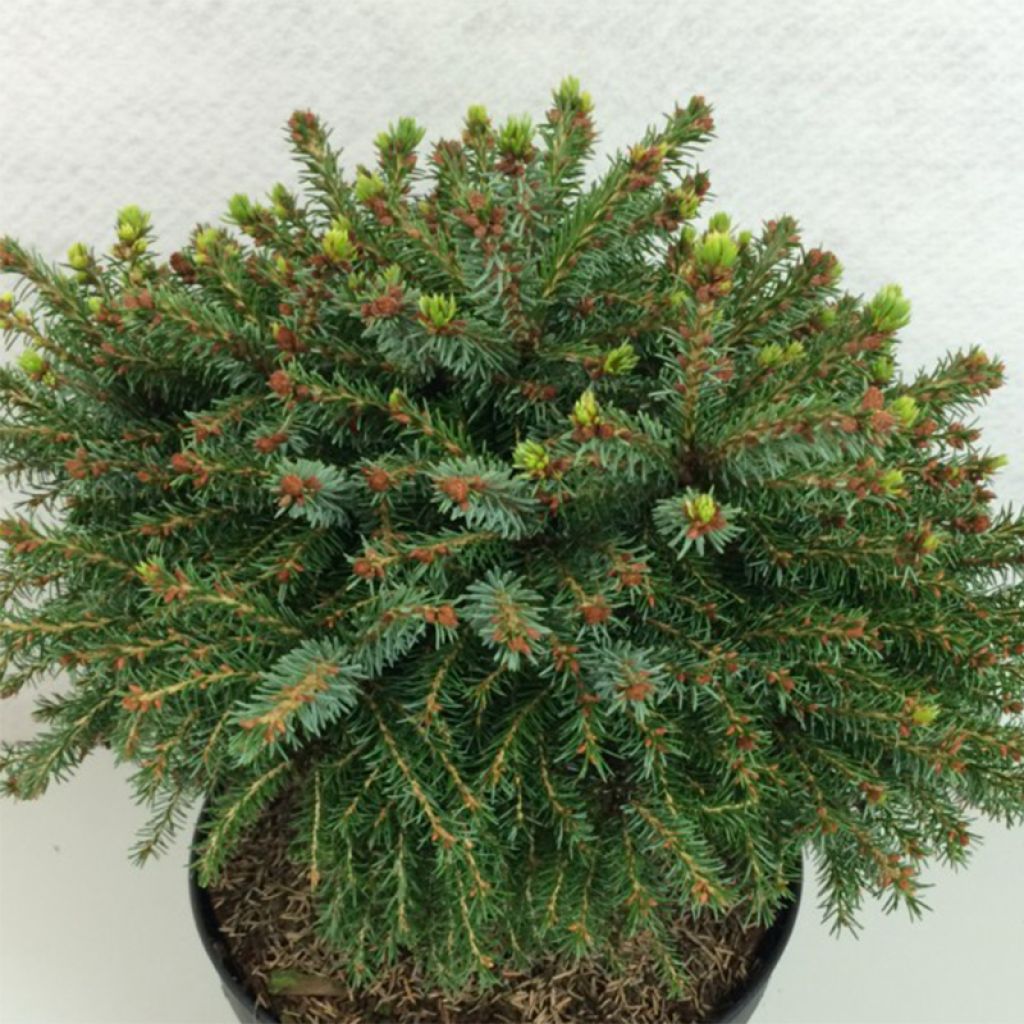

Picea omorika Treblitzsch - Epicea de Serbie
Picea omorika Treblitsch - Serbian Spruce
Picea omorika Treblitzsch
Serbian Spruce
Why not try an alternative variety in stock?
View all →Order in the next for dispatch today!
Dispatch by letter from €3.90.
Delivery charge from €5.90 Oversize package delivery charge from €6.90.
More information
This item is not available in your country.
Schedule delivery date,
and select date in basket
This plant carries a 24 months recovery warranty
More information
We guarantee the quality of our plants for a full growing cycle, and will replace at our expense any plant that fails to recover under normal climatic and planting conditions.
From €5.90 for pickup delivery and €6.90 for home delivery
Express home delivery from €8.90.
Does this plant fit my garden?
Set up your Plantfit profile →
Description
Picea omorika 'Treblitsch' is a dwarf variety of the Serbian Spruce. It has a very slow growth and initially has a globular habit, then it takes on the shape of a rounded and wide cone, sometimes slightly irregular, very compact. Its short and dense branches resemble small upright brushes, with a beautiful green-blue to dark green colour, and a silvery underside. Its well-rounded silhouette, adorned with metallic-coloured foliage, fits well in small gardens, adds life to large rockeries, and looks marvelous in pots on the terrace. It is a vigorous and hardy small conifer that is not demanding and does not require pruning. It thrives in well-drained soil that is not too dry, and in sunny locations.
Picea omorika, also called Serbian Spruce, is a plant belonging to the Pinaceae family and is native to Bosnia and Serbia. It is a rare species endemic to the Drina Valley (in Western and Eastern Serbia), although it can also be found in Bosnia and Herzegovina. In its natural environment, which is often harsh, this tree can reach over 30m (98ft) in height and has a narrow pyramidal habit with pendulous branches. This conifer is very tolerant of soil conditions and can withstand pollution very well.
The 'Treblitsch' variety is distinguished by its stout, compact, and unusual habit. After many years, this shrub forms a very wide cone with a rounded top, slightly taller than it is wide. Its growth rate is very slow, around 2 to 4cm (1 to 2in) per year. A 10-year-old specimen will not exceed 40cm (16in) in all directions. At maturity, it will reach 80cm (32in) in all directions, depending on the growing conditions. It produces thin and short branches that are densely packed. They are covered with flattened and shiny needles, arranged radially around the branches, and have an aromatic resin smell. The needles are dark blue-green on the top and have two bright white bands on the underside, giving the foliage a blue-metallic hue on the young shoots.
The dwarf Serbian Spruce 'Treblitsch' deserves to be better known and planted in gardens throughout France. With its easy cultivation, distinctive personality, and reduced size, it is a perfect plant for small gardens, rockeries, and terraces. It thrives in many situations, tolerates urban pollution, and adapts to various climates as long as the soil is well-drained. This plant pairs well with large stones, geometric lines, and masonry structures. It can be combined with low-growing conifers with a prostrate (Juniperus horizontalis 'Blue Chip'), columnar, or pyramidal habit. The graphic qualities of conifers naturally stand out in the design of a contemporary garden, which favors the aesthetics of shapes, silhouettes, and textures over the dance of flowers. These plants, with their reassuring permanence, provide lasting structure to a bed, mark pathways, and border the terrace, easily substituting for the strong presence of trimmed boxwood or holly. They also pair well with heathers, shrubby salvias, or ground-covering plants such as aubrietas and Cerastiums, as well as with light-flowering shrubs like Gauras. The key is to play with volumes and colours.
Report an error about the product description
Picea omorika Treblitsch - Serbian Spruce in pictures
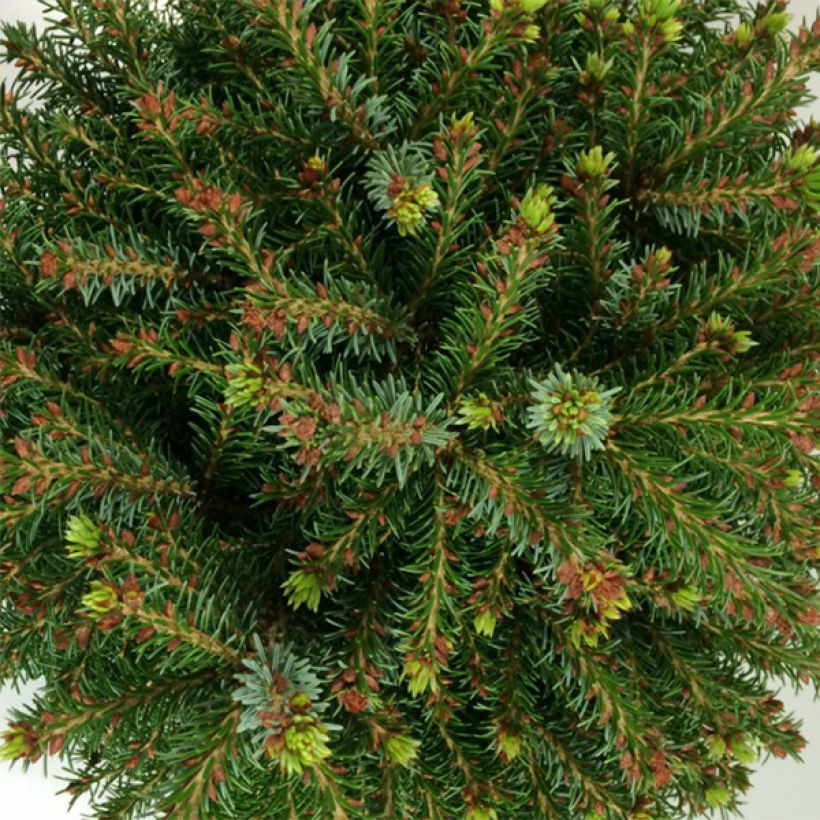

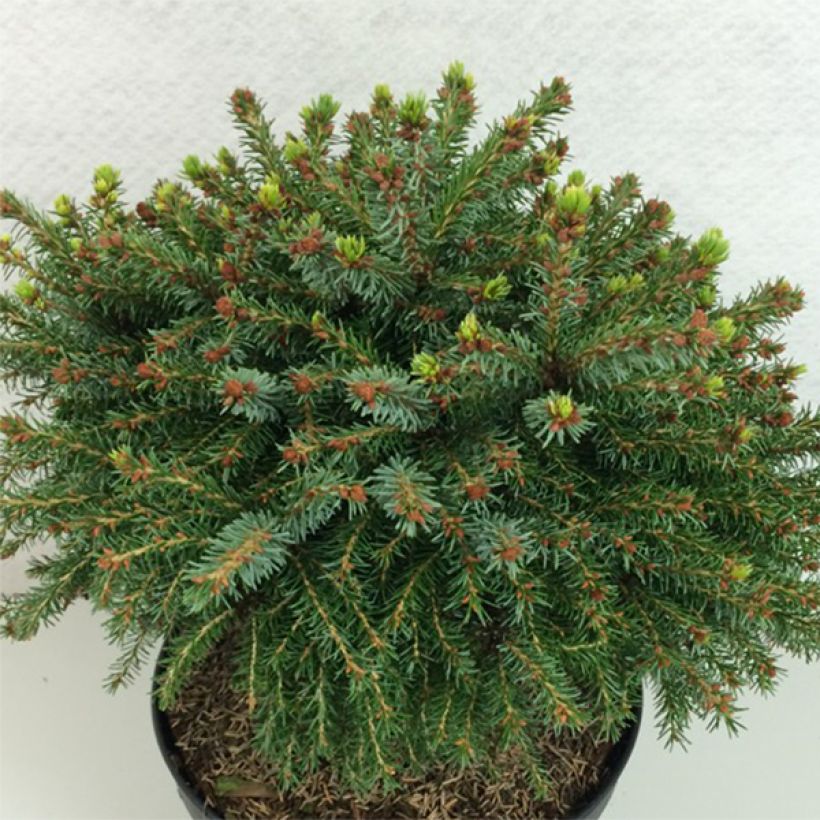

Plant habit
Flowering
Foliage
Botanical data
Picea
omorika
Treblitzsch
Pinaceae
Serbian Spruce
Cultivar or hybrid
Other Picea
Planting and care
Picea omorika 'Treblitsch' is planted from September to November and from February to June in ordinary, well-drained, moist or dry, rather fertile soil, even slightly limestone. Sandy, humus-rich or rocky soil will be perfectly suitable. Choose a sunny or semi-shaded location, sheltered from prevailing winds. Soak the roots well before planting. Add organic amendment at planting and water generously in the first few years, and in case of prolonged drought. Apply a special conifer fertilizer every year in April and weed the soil in summer. This very hardy conifer (up to -30°C (1°F) at least) however fears heavy soils, soaked with water in winter. Pruning is not necessary.
Planting period
Intended location
Care
This item has not been reviewed yet - be the first to leave a review about it.
Evergreen shrubs
Haven't found what you were looking for?
Hardiness is the lowest winter temperature a plant can endure without suffering serious damage or even dying. However, hardiness is affected by location (a sheltered area, such as a patio), protection (winter cover) and soil type (hardiness is improved by well-drained soil).

Photo Sharing Terms & Conditions
In order to encourage gardeners to interact and share their experiences, Promesse de fleurs offers various media enabling content to be uploaded onto its Site - in particular via the ‘Photo sharing’ module.
The User agrees to refrain from:
- Posting any content that is illegal, prejudicial, insulting, racist, inciteful to hatred, revisionist, contrary to public decency, that infringes on privacy or on the privacy rights of third parties, in particular the publicity rights of persons and goods, intellectual property rights, or the right to privacy.
- Submitting content on behalf of a third party;
- Impersonate the identity of a third party and/or publish any personal information about a third party;
In general, the User undertakes to refrain from any unethical behaviour.
All Content (in particular text, comments, files, images, photos, videos, creative works, etc.), which may be subject to property or intellectual property rights, image or other private rights, shall remain the property of the User, subject to the limited rights granted by the terms of the licence granted by Promesse de fleurs as stated below. Users are at liberty to publish or not to publish such Content on the Site, notably via the ‘Photo Sharing’ facility, and accept that this Content shall be made public and freely accessible, notably on the Internet.
Users further acknowledge, undertake to have ,and guarantee that they hold all necessary rights and permissions to publish such material on the Site, in particular with regard to the legislation in force pertaining to any privacy, property, intellectual property, image, or contractual rights, or rights of any other nature. By publishing such Content on the Site, Users acknowledge accepting full liability as publishers of the Content within the meaning of the law, and grant Promesse de fleurs, free of charge, an inclusive, worldwide licence for the said Content for the entire duration of its publication, including all reproduction, representation, up/downloading, displaying, performing, transmission, and storage rights.
Users also grant permission for their name to be linked to the Content and accept that this link may not always be made available.
By engaging in posting material, Users consent to their Content becoming automatically accessible on the Internet, in particular on other sites and/or blogs and/or web pages of the Promesse de fleurs site, including in particular social pages and the Promesse de fleurs catalogue.
Users may secure the removal of entrusted content free of charge by issuing a simple request via our contact form.
The flowering period indicated on our website applies to countries and regions located in USDA zone 8 (France, the United Kingdom, Ireland, the Netherlands, etc.)
It will vary according to where you live:
- In zones 9 to 10 (Italy, Spain, Greece, etc.), flowering will occur about 2 to 4 weeks earlier.
- In zones 6 to 7 (Germany, Poland, Slovenia, and lower mountainous regions), flowering will be delayed by 2 to 3 weeks.
- In zone 5 (Central Europe, Scandinavia), blooming will be delayed by 3 to 5 weeks.
In temperate climates, pruning of spring-flowering shrubs (forsythia, spireas, etc.) should be done just after flowering.
Pruning of summer-flowering shrubs (Indian Lilac, Perovskia, etc.) can be done in winter or spring.
In cold regions as well as with frost-sensitive plants, avoid pruning too early when severe frosts may still occur.
The planting period indicated on our website applies to countries and regions located in USDA zone 8 (France, United Kingdom, Ireland, Netherlands).
It will vary according to where you live:
- In Mediterranean zones (Marseille, Madrid, Milan, etc.), autumn and winter are the best planting periods.
- In continental zones (Strasbourg, Munich, Vienna, etc.), delay planting by 2 to 3 weeks in spring and bring it forward by 2 to 4 weeks in autumn.
- In mountainous regions (the Alps, Pyrenees, Carpathians, etc.), it is best to plant in late spring (May-June) or late summer (August-September).
The harvesting period indicated on our website applies to countries and regions in USDA zone 8 (France, England, Ireland, the Netherlands).
In colder areas (Scandinavia, Poland, Austria...) fruit and vegetable harvests are likely to be delayed by 3-4 weeks.
In warmer areas (Italy, Spain, Greece, etc.), harvesting will probably take place earlier, depending on weather conditions.
The sowing periods indicated on our website apply to countries and regions within USDA Zone 8 (France, UK, Ireland, Netherlands).
In colder areas (Scandinavia, Poland, Austria...), delay any outdoor sowing by 3-4 weeks, or sow under glass.
In warmer climes (Italy, Spain, Greece, etc.), bring outdoor sowing forward by a few weeks.
